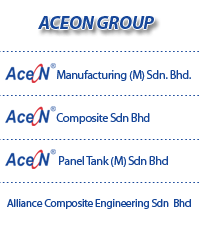|
|
FRP Pipes - What Are The Benefits Of Using FRP Pipes?Fiberglass Reinforced Plastic (FRP) Pipes are used in various industrial product applications including the handling of materials in a corrosive environment and also the transfer of corrosive products and materials. However, the fastest growing application of FRP systems is for industrial equipment. The application of FRP pipes ranges from handling of combustible and flammable liquids at retail facilities to water and sewer mains in the industrial and municipal markets. Advantages of FRP Pipes 1. Corrosion resistance 2. Weight advantages
4. Economy Lower cost is a major advantage of using FRP pipes because they offer an effective solution to corrosion at the lowest cost when compared to materials such as titanium, rubber lining and stainless steel. However, the cost advantage of such materials mainly depends on the design considerations, application, pressure involved, availability, raw material costs and product configurations. 5. FlexibilityFRP pipes are versatile in their applications is often overlooked. However, it is important to note that you can do things with Fiberglass Reinforced Plastic pipes which cannot be done effectively and economically with other readily available materials. FRP pipes can be used to mold any piece of equipment or configuration for which permanent or temporary molds can be built. For instance, duct work is quite easy with FRP pipes because you can make all types of Tee inlets, rectangular transitions, circular transitions, elbows, and flanges at minimal cost. Fiberglass Reinforced Plastic pipes can also be used to line new and existing structures. The design of FRP systems has been greatly enhanced by using of computer software programs. These programs mainly include; chemical composition, gas flow analysis, liquid flow analysis, thrust block analysis, free span analysis, and installation information. This is very important in order to ensure that the specific requirements in different industries are fully met so as to guarantee maximum efficiency of FRP pipes. |
Contact address: Indonesia Address:
|
|||||||||||||||||||||||||||||||||||||
| FRP Panel Tank Division FRP Panel Tank |
FRP Pultrusion Division FRP Grating FRP Cable Ladder/Tray FRP Structural Profiles FRP Handrail/Caged Ladder |
FRP Contact Molding & Filament Winding Division FRP Scrubbers and Ductings FRP Tanks FRP Pipes & Fittings FRP Centrifugal Fans FRP Composite Door FRP Lining and Coating FRP Custom Made Products |
||||||||||||||||||||||||||||||||||||
| Copyright © 2015 |
Powered by SEO Malaysia | Online Marketing | Mobile Friendly Web Design | Simple Internet Communications Sdn Bhd |


